
The units of the British Army are commanded by the Chief of the General Staff. This is broadly similar to the structures of the Royal Navy and Royal Air Force, in that the four-star (general-equivalent) commanders-in-chief have been eliminated since 2011 and service chiefs are given direct command of their respective services and are responsible as Top Level Budget (TLB) holders. Army Headquarters is located in Andover, Hampshire. There is a Commander Field Army and a personnel and UK operations command, Home Command.
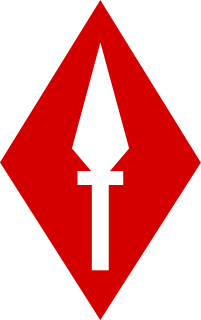
I Corps was an army corps in existence as an active formation in the British Army for most of the 80 years from its creation in the First World War until the end of the Cold War, longer than any other corps. It had a short-lived precursor during the Waterloo Campaign.

The Royal Corps of Signals is one of the combat support arms of the British Army. Signals units are among the first into action, providing the battlefield communications and information systems essential to all operations. Royal Signals units provide the full telecommunications infrastructure for the Army wherever they operate in the world. The Corps has its own engineers, logistics experts and systems operators to run radio and area networks in the field. It is responsible for installing, maintaining and operating all types of telecommunications equipment and information systems, providing command support to commanders and their headquarters, and conducting electronic warfare against enemy communications.

The 53rd (Welsh) Infantry Division was an infantry division of the British Army that fought in both the First and Second World Wars. Originally raised in 1908 as the Welsh Division, part of the Territorial Force (TF), the division saw service in First World War, being designated 53rd (Welsh) Division in mid-1915, and fought in the Gallipoli Campaign and in the Middle East. Remaining active in the Territorial Army (TA) during the interwar period as a peacetime formation, the division again saw action in Second World War, fighting in North-western Europe from June 1944 until May 1945.
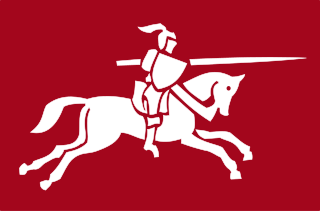
VIII Corps was a British Army corps formation that existed during the First and Second World Wars. In the latter, it took part in the Normandy Campaign in 1944, where it was involved in Operation Epsom and Operation Goodwood. It would later play a supporting role in Operation Market Garden and finish the war by advancing from the Rhine to the Baltic Sea.

160 (Welsh) Brigade or Brigâd 160 (Cymru), previously 160 Infantry Brigade and Headquarters Wales, is a regional brigade of the British Army that has been in existence since 1908, and saw service during both World War I and World War II, as part of the 53rd (Welsh) Infantry Division. It is a regional command responsible for all of Wales. The Brigade is also regionally aligned with the Eastern European and Central Asian regions as part of defence engagement. The brigade organises an annual patrolling competition in the Brecon Beacons, known as Exercise Cambrian Patrol.
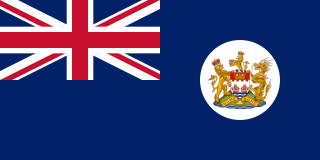
British Forces Overseas Hong Kong comprised the elements of the British Army, Royal Navy and Royal Air Force stationed in British Hong Kong. The Governor of Hong Kong also assumed the position of the Commander-in-chief of the forces and the Commander British Forces in Hong Kong took charge of the daily deployment of the troops. Much of the British military left prior to the handover of Hong Kong to China in 1997. The present article focuses mainly on the British garrison in Hong Kong in the post Second World War era. For more information concerning the British garrison during the Second World War see the Battle of Hong Kong.

London District (LONDIST) is the name given by the British Army to the area of operations encompassing the Greater London area. It was established in 1870 as Home District.
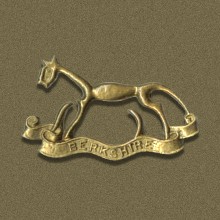
The Berkshire Yeomanry was an auxiliary regiment of the British Army formed in 1794 to counter the threat of invasion during the French Revolutionary Wars. It was the Royal County of Berkshire's senior volunteer unit with over 200 years of voluntary military service. After taking part in the Second Boer War, it saw action as mounted troops in the First World War and as artillery in the Second World War. Its lineage is maintained by 94 Signal Squadron, part of 39 (Skinners) Signal Regiment. The Headquarters of the Squadron is based in Windsor, Berkshire. The Berkshire Yeomanry had a number of battle honours won from Europe to the Far East and Private Frederick Potts was awarded a Victoria Cross for service during the Gallipoli Campaign.
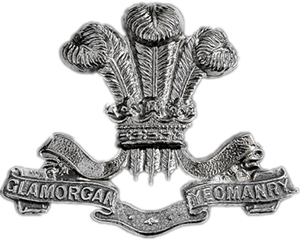
The Glamorgan Yeomanry was a Yeomanry regiment of the British Army originally raised in the late eighteenth century as a result of concern over the threat of invasion by the French. It was re-raised in the Second Boer War and saw service in both World War I and World War II. The lineage is maintained by C Troop, 211 Battery, 104th Regiment Royal Artillery.
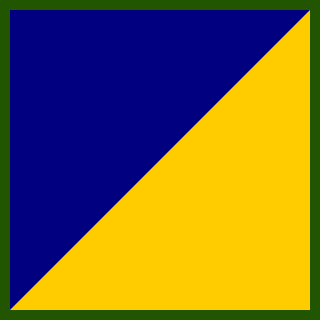
The Pembroke Yeomanry was a regiment of the British Army formed in 1794. It saw action in the Second Boer War, the First World War and the Second World War. The lineage is maintained by 224 Transport Squadron, part of 157 (Welsh) Regiment RLC.
The West Somerset Yeomanry was a Yeomanry regiment of the British Army. First raised in 1794, it participated in the Second Boer War and World War I before being converted to an artillery regiment. It served in World War II. Post-war it was gradually reduced in strength until the yeomanry lineage of the successor unit was discontinued on 9 November 1988.
The Herefordshire Light Infantry was an infantry regiment of the British Army in existence from 1861 to 1967. The regiment had no lineal connection with the 36th (Herefordshire) Regiment of Foot.

The Monmouthshire Regiment was an infantry regiment of the British Army and the Territorial Army. Originating in units of rifle volunteers formed in Monmouthshire in 1859, the regiment served in the Second Anglo-Boer War and both World War I and World War II before losing its separate identity in 1967.
The 344th Moonlight Battery, Royal Artillery was a searchlight unit of the British Army that provided artificial illumination, or 'Monty's Moonlight', for night operations by 21st Army Group during the campaign in North West Europe in 1944–45. Previously, it had served on anti-aircraft (AA) duties during The Blitz.
The following is a hierarchical outline for the structure of the British Army in 1989. The most authoritative source for this type of information available is Ministry of Defence, Master Order of Battle, and United Kingdom Land Forces, HQ UKLF, UKLF ORBAT Review Action Plan, HQ UKLF, 1990.

The 1st Glamorganshire Artillery Volunteers was formed in 1859 in response to a French invasion threat. Formed as a coast artillery unit, it later became part of the Royal Field Artillery in the Territorial Force and served during both World Wars until amalgamated in 1961.
The 1st Monmouthshire Artillery Volunteer Corps was a unit of Britain's Volunteer Force raised in 1860 from Monmouthshire in the Welsh borders. After transfer to the Territorial Force it served with the 53rd (Welsh) Division in Palestine in World War I and in North West Europe in World War II. Its successors serve with today's Army Reserve.
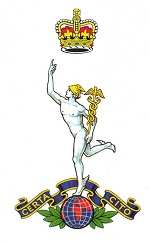
The City of London Signals was a Territorial Army unit of the British Army's Royal Corps of Signals. It had its origins in a signal company of the Royal Engineers formed in 1908 and during World War II it provided the divisional signals for the 56th (London) Division and its duplicates as well as communications for the Royal Air Force in the Middle East. Its successors continued in the postwar Territorial Army and Army Reserve until 2016.

43 (Wessex) Signal Regiment was a Territorial Army (TA) unit of the British Army's Royal Corps of Signals from 1920. It had its origins in a Volunteer unit of the Royal Engineers formed in the West Country in 1860. provided the communications for the 43rd (Wessex) Infantry Division during World War II. Its successor still serves as a squadron in today's Army Reserve.















